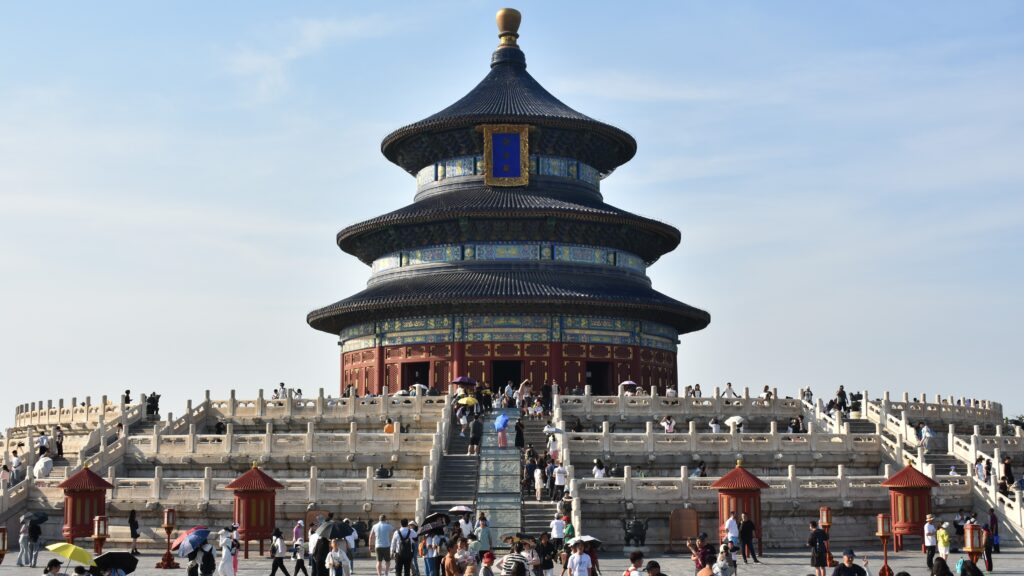
Image: wlyip / Shutterstock.com
SINGAPORE, February 5, 2024 – China’s economy should recover steadily in 2024, supported by well-calibrated and targeted monetary, financial, and fiscal policies. The banking sector is sound and overall credit conditions should improve. Conditions in the real estate sector remain challenging but the sector is expected to bottom out soon and recover gradually as policy measures introduced since the second half of 2022 gain more traction. Policy space to safeguard macro stability and support the economic recovery remains sizable, despite the large fiscal stimulus over the past few years.
Looking ahead, given China’s sound macro fundamentals, the country should step up its efforts to pursue high-quality growth that is resilient, inclusive, and sustainable. Challenges related to population aging, high leverage, and geoeconomic fragmentation should be addressed.
This is according to the 2023 Annual Consultation Report on China published by the ASEAN+3 Macroeconomic Research Office (AMRO) today. The report was prepared based on AMRO’s Annual Consultation Visit to China in June 2023, and data and information available up to January 17, 2024.
Recovery and growth
China’s economy is expected to continue to recover, returning to its trend trajectory in 2024. The economy rebounded strongly in the first quarter of 2023, following the economic reopening at the end of last year. This was followed by a marked slowdown in the second quarter as headwinds stiffened, and then a significant pick-up in the third and fourth quarters. For the year, GDP growth was a creditable 5.2 percent. Given China’s sound macro fundamentals, the economy should stabilize further and gain more momentum in 2024.
AMRO forecasts GDP growth at 5.3 percent in 2024 – with risks tilted moderately to the downside – and 4.9 percent in 2025. Consumption will be the primary driver of economic growth this year and next year, supported by further improvements in labor market conditions.
Investment is expected to gain greater traction in the later part of 2024 and in 2025, driven by expansion of traditional infrastructure, construction of modern and advanced infrastructure, robust investments in high-tech manufacturing and services, as well as a gradual recovery in the real estate sector. Exports should pick up in 2024 with further progress in the turnaround in the electronics cycle.
Risks and vulnerabilities
The balance of risks is tilted moderately to the downside in the near term, with some stiff challenges domestically and several major uncertainties externally.
The recovery of the real estate sector is likely to be gradual and could falter again. The heightened financial strains on some local governments could adversely impact the economic recovery of the affected regions. High leverage remains a key vulnerability in some sectors of the economy, and prudent application of effective measures is needed to avoid the risk of financial distress, which would be a drag on the economy.
The external environment poses multiple challenges, particularly the short-term risk of a sharper-than-expected global economic slowdown. Geopolitical tensions could escalate further, including a broadening of the technological competition between China and the U.S. to other areas of trade and investment, with adverse consequences for China and the global economy.
Perennial challenges, such as population aging, socioeconomic disparities, and climate change require forward-looking actions to address them effectively. The multitude of near-term risks and longer-term challenges will put persistent pressure on China’s financial resources and policy capacity, necessitating continuous efforts for structural reforms.
Policy responses
Monetary policy should continue to ensure that monetary conditions remain supportive of China’s economic recovery in the near term. Fiscal policy should provide targeted support for those sectors that are lagging in the recovery and for job creation.
Policies for the real estate sector should continue to foster its sound development over the long term, while supporting its nascent recovery in the near term. Safeguarding financial sector soundness is crucial, especially with the recovery of the economy and property sector still at an early stage. The weaker banks should work on increasing their capital buffers and restructure to become more viable and competitive.
For the long term, China should pursue a multi-faceted strategy to achieve high-quality economic growth. To mitigate the impact of population aging, China needs policies to boost its population growth, expand its labor force, and enhance its labor mobility, as well as improve the coverage and adequacy of its social security system.
Given the upward trend in healthcare and social services spending due to population aging, China must find more sources of revenue, enhance the efficiency of fiscal spending, and adjust its budget allocation to reflect shifts in policy priorities.
To boost the economy’s growth potential, it is important for China to invest more in research and development and human capital, to strengthen market functions and entrepreneurship, and to collaborate with other countries to uphold and strengthen the multilateral trading system.
AMRO commends China’s pursuit of carbon neutrality. The economy’s strong advantage in renewable energy – powered by a massive investment push, rapid technological advances, and efficient supply chains – has put China in a strong position to achieve carbon neutrality before 2060 and contribute to the global climate change agenda.
About AMRO
The ASEAN+3 Macroeconomic Research Office (AMRO) is an international organization established to contribute toward securing macroeconomic and financial resilience and stability of the ASEAN+3 region, comprising 10 members of the Association of Southeast Asian Nations (ASEAN) and China; Hong Kong, China; Japan; and Korea. AMRO’s mandate is to conduct macroeconomic surveillance, support regional financial arrangements, and provide technical assistance to the members. In addition, AMRO also serves as a regional knowledge hub and provides support to ASEAN+3 financial cooperation.
